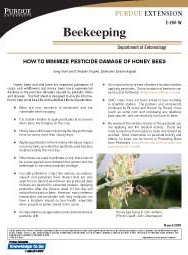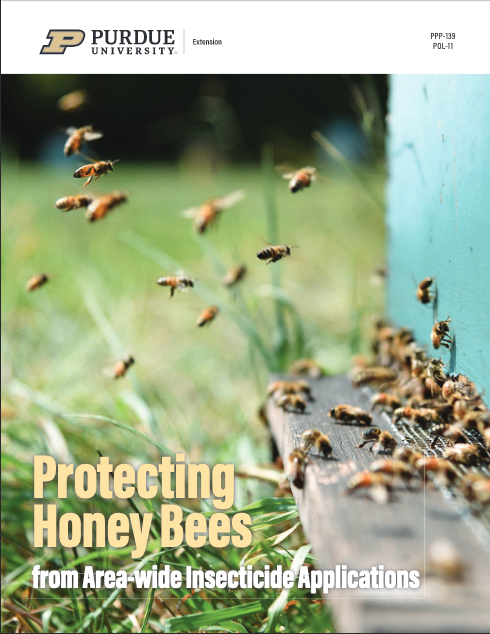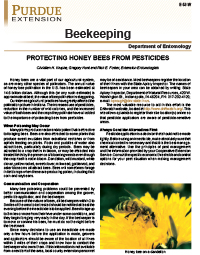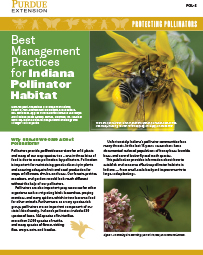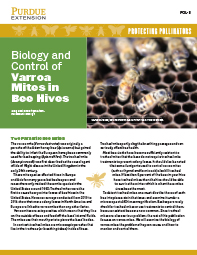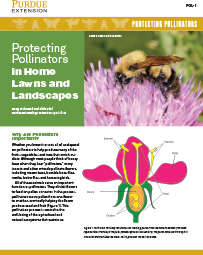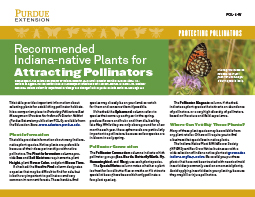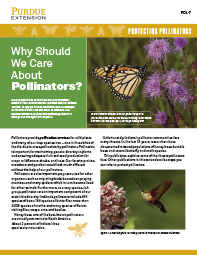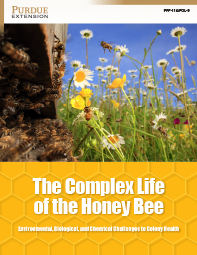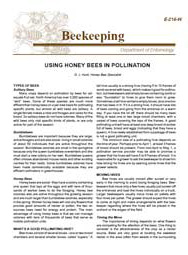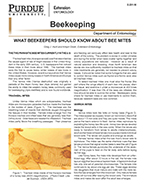Country Lifestyle
Beekeeping
How to Minimize Pesticide Damage of Honey Bees
Honey bees and wild bees are important pollinators of crops and wildflowers, but honey bees have experienced declines in the past two decades caused by parasitic mites and disease This publication provides information to...
Protecting Honey Bees from Area-wide Insecticide Applications
Whether you are a large apiarist or a beginning hobbyist, it is essential to understand and prepare your bees when a state agency announces any pesticide application program. Often, these agencies may announce area-wide ...
Protecting Honey Bees from Pesticides
Honey bees are a vital part of our agricultural system, as are many other species of pollinators. But pesticide misuse can threaten these important resources. This publication discusses alternatives to pesticides to prot...
Protecting Pollinators: Best Management Practices for Indiana Pollinator Habitat
This publication provides information about how to establish and conserve effective pollinator habitats in Indiana - from small-scale backyard improvements to large-scale plantings.
Format: Bo...
Protecting Pollinators: Biology and Control of Varroa Mites in Bee Hives
This publication describes varroa mites and their effects on honey bee hives. It also recommends monitoring and management practices to protect hives against this pest.
Format: Booklet, PDF, an...
Protecting Pollinators: Protecting Pollinators in Home Lawns and Landscapes
Whether you know it or not, we all depend on pollinators for the fruits, vegetables, nuts, and flowers that enrich our lives. But pollinators face many threats. This publication explains what homeowners can do to prot...
Protecting Pollinators: Recommended Indiana-native Plants for Attracting Pollinators
This publication provides a list of recommended plants that homeowners and others can use to establish and conserve effective pollinator habitats in Indiana - from small-scale backyard improvements to large-scale plan...
Protecting Pollinators: Why Should We Care About Pollinators?
This publication explains some of the threats pollinators face. Other publications in the Protecting Pollinators series describe steps you can take to protect pollinators.
Format: Booklet, PDF,...
This publication, which is part of the Protecting Pollinators series, explains the complex biology of honey bees. It also explores the roles pesticides may play in bee health, examines the latest knowledge in this fas...
Using Honey Bees in Pollination
This publication Information includes pollination procedures, pesticide recommendations and the duration of the toxic effects on bees....
What Beekeepers Should Know About Bee Mites
Varroa mites (Varroa destructor) can be seen on the surface of both adult and immature honey bees, and they can move about quickly. The adult female Varroa mite is a shiny, reddish-brown, shield-shaped object about 1....









